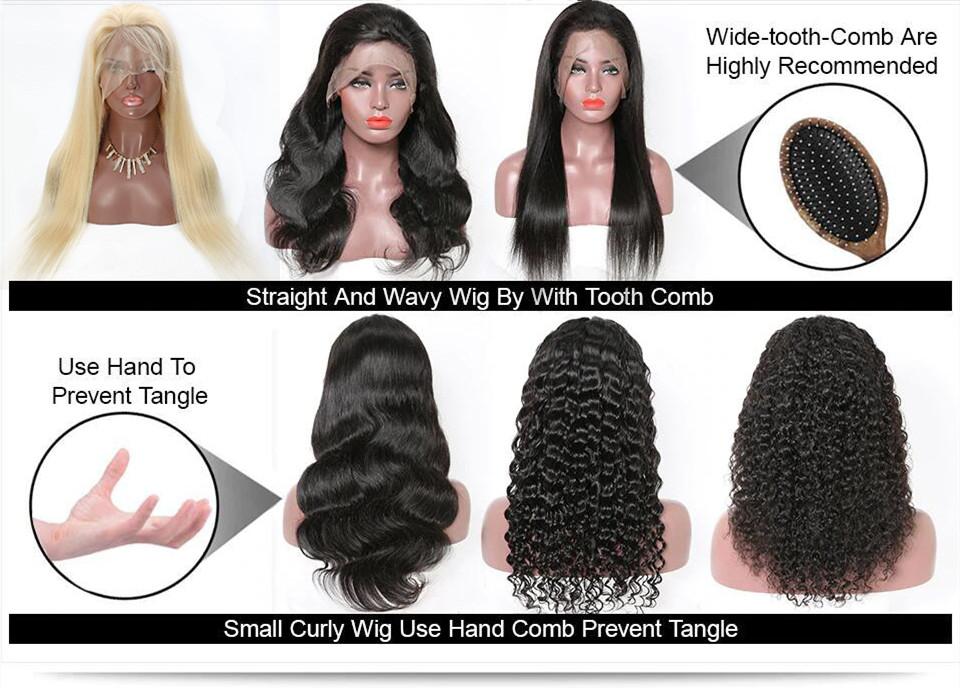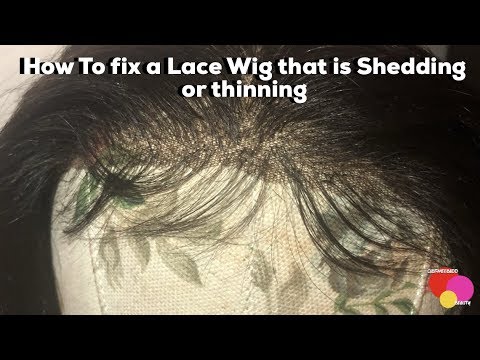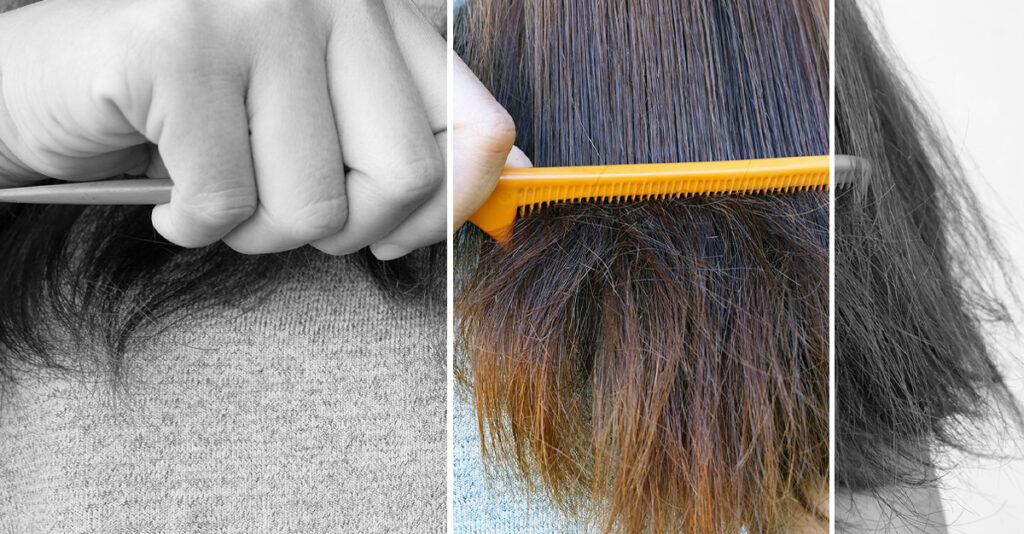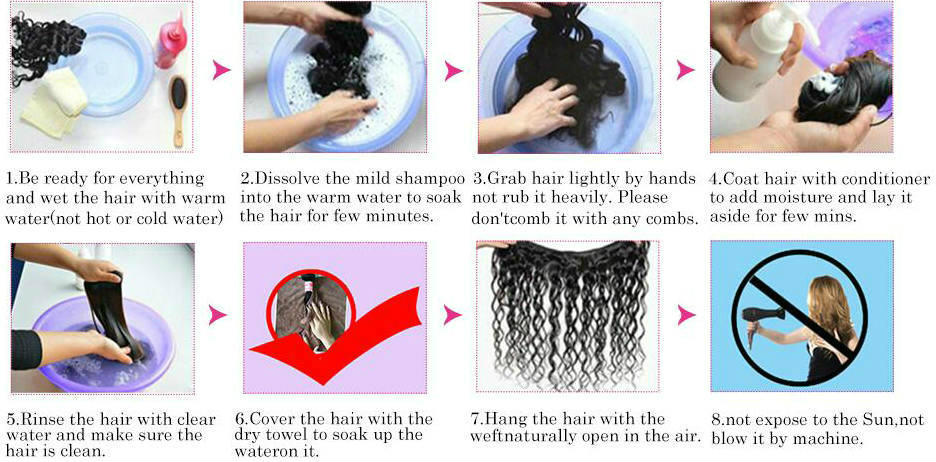If you’re struggling with a shedding human hair wig, fear not! There are several methods you can try to fix the issue and restore your wig to its full glory. From detangling the hair to using sealing products and avoiding heat damage, these simple tips will help you minimize shedding and keep your wig looking flawless. With these solutions at your disposal, you’ll be able to enjoy the benefits of a human hair wig without worrying about excessive shedding.

Identify the Cause of Shedding
Check the wig construction
When dealing with shedding in a human hair wig, the first step is to identify the cause. One common cause of shedding is the construction of the wig itself. Take a close look at the wig and examine its construction. Look for any signs of poor craftsmanship, such as loose or unfinished wefts. These flaws can lead to hair strands becoming loose and eventually shedding.
Examine the hair strands
Another important factor to consider when identifying the cause of shedding is the quality of the hair strands. Check if the strands are intact and securely attached to the wig cap. If you notice any loose or weak strands, it is likely that they will shed. Additionally, examine the condition of the cuticles on the hair strands. If the cuticles are damaged or stripped, it can also contribute to shedding.
Consider external factors
Aside from the wig construction and hair quality, external factors can also play a role in shedding. For example, excessive friction or rough handling of the wig can cause the hair strands to loosen and shed. Additionally, using harsh hair products or exposing the wig to excessive heat can lead to damage and shedding. Consider all these factors when trying to identify the cause of shedding in your human hair wig.
Preventative Measures
Properly secure the wig
To prevent shedding in your human hair wig, it is essential to properly secure it. Make sure that the wig cap fits snugly on your head and that the adjustable straps are correctly adjusted. If the wig is not secured properly, it can shift during wear, causing tension on the hair strands and leading to shedding. Using wig clips or adhesive can also help to secure the wig in place.
Avoid excessive brushing
While brushing is necessary to maintain a human hair wig, excessive brushing can lead to shedding. Avoid forcefully brushing the wig or using a brush with stiff bristles. Instead, opt for a wide-toothed comb or a brush specifically designed for wigs. Gently comb through the hair, starting from the ends and working your way up. This will help to detangle the wig without putting excessive stress on the hair strands.
Use gentle hair products
The choice of hair products can have a significant impact on shedding in a human hair wig. It is important to use gentle hair care products that are specifically formulated for wigs. Avoid using products that contain harsh chemicals or sulfates, as they can strip the hair strands and cause shedding. Opt for shampoos and conditioners that are specifically designed for human hair wigs to ensure the longevity and health of the wig.
Repairing the Wig
Trimming loose strands
If you notice loose strands in your human hair wig, it is possible to repair them by trimming them. Carefully trim the loose strands, ensuring that you don’t cut any additional strands. Use sharp hair scissors and take your time to achieve a clean and even cut. Keep in mind that trimming loose strands is a temporary solution and may need to be repeated if shedding persists.
Sealing the wefts
To prevent shedding at the construction level, you can seal the wefts of your human hair wig. Wefts are the rows of hair strands that are sewn together to create the wig cap. Sealing the wefts involves applying a thin layer of adhesive or glue along the stitching to reinforce it and prevent the hair strands from loosening. This method can help to reduce shedding and increase the durability of the wig.
Reinforcing weak areas
If your human hair wig has weak areas that are prone to shedding, you can reinforce them to prevent further damage. One method is to carefully sew in additional wefts or strands of hair to strengthen those areas. Another option is to use a wig bonding agent or adhesive to secure the weak areas. Ensure that you follow the instructions carefully and use these methods sparingly to avoid compromising the overall integrity of the wig.
Handling Shedding During Styling
Use a light hand while styling
When styling your human hair wig, it is important to use a light hand to minimize shedding. Avoid pulling or tugging on the hair strands, as this can cause them to loosen and shed. Instead, gently work with the hair and use gentle motions to style it. This will help to reduce tension on the strands and prevent shedding during the styling process.
Apply products to minimize shedding
Using the right hair products can also help to minimize shedding while styling a human hair wig. Look for products that are specifically formulated to minimize shedding and strengthen the hair strands. Leave-in conditioners and serums can be applied to the wig before styling to provide extra protection and nourishment. These products help to create a protective barrier around the hair strands and reduce friction, leading to less shedding.

Redeeming a Severely Shedding Wig
Consider professional repair
If your human hair wig is severely shedding and the previous methods have not been effective in preventing it, it may be time to consider professional repair. A wig specialist or stylist who specializes in wig repair can assess the wig and determine the best course of action. They may be able to reinforce the construction, repair any damaged areas, or recommend alternative solutions to address the shedding.
Invest in a new wig
If your human hair wig is beyond repair and continues to shed excessively despite your best efforts, it may be time to consider investing in a new wig. While it may be disheartening to let go of a beloved wig, sometimes it is the best option to ensure that you have a wig that meets your needs and does not cause unnecessary frustration. Take the opportunity to research and find a wig that is of high quality and suits your style preferences.
Caring for Your Wig to Prevent Shedding
Wash and condition regularly
Proper care and maintenance are crucial in preventing shedding in a human hair wig. Regularly wash and condition the wig to keep it clean and free from buildup. Use a mild shampoo and conditioner that are specifically formulated for human hair wigs. Gently massage the shampoo into the hair strands and rinse thoroughly. Follow with a nourishing conditioner, focusing on the ends of the hair. Rinse again and gently squeeze out any excess water before patting the wig dry with a towel.
Avoid heat styling excessively
While human hair wigs can withstand heat styling, excessive use of heat can damage the hair strands and lead to shedding. Limit the use of heat styling tools such as straighteners, curling irons, and hairdryers. If you do need to use heat, always use a heat protectant spray and set the tools to a moderate temperature. Allow the wig to air dry whenever possible to minimize exposure to heat.
Store the wig properly
Proper storage is essential in maintaining the condition of a human hair wig and preventing shedding. When not in use, store the wig in a clean, dry, and cool place away from direct sunlight. Avoid folding or putting pressure on the wig, as this can cause the hair strands to become tangled and shed. Consider using a wig stand or a mannequin head to properly store the wig and help it maintain its shape.

Dealing with Shedding in Different Wig Types
Remy hair wigs
Remy hair wigs are known for their high quality and natural appearance. The hair strands in Remy wigs are carefully gathered and aligned, ensuring that the cuticles are intact and facing the same direction. This meticulous attention to detail minimizes shedding in Remy hair wigs. However, if shedding does occur, it is important to follow the previously mentioned steps to identify the cause and take appropriate action.
Non-Remy hair wigs
Non-Remy hair wigs are made from hair that may not have been as carefully selected or processed as Remy hair. As a result, shedding can be more common in non-Remy wigs. To prevent shedding, it is crucial to properly care for and maintain the wig. Regularly check the construction and reinforce any weak areas. Avoid excessive brushing or harsh handling that can contribute to shedding.
Synthetic hair wigs
While shedding is less common in synthetic hair wigs compared to human hair wigs, it can still occur due to wear and tear. Synthetic hair fibers are made from various materials, including acrylic, polyester, and kanekalon. Shedding in synthetic wigs is often the result of friction or damage to the fibers. To minimize shedding, handle the wig with care, use gentle products, and avoid excessive brushing or heat styling.
Seeking Professional Advice
Consult a wig specialist
If you are experiencing excessive shedding in your human hair wig and are unsure how to address the issue, it is advisable to consult a wig specialist. These professionals have extensive knowledge and experience in working with wigs and can provide valuable guidance. They can assess the wig and provide personalized recommendations tailored to your specific situation. Don’t hesitate to reach out for professional advice when needed.
Visit a wig salon
Another option for seeking professional advice on fixing a shedding human hair wig is to visit a wig salon. Wig salons often have skilled stylists who can assess the wig and provide recommendations for repair or replacement. They can also offer additional services such as wig customization or styling. Visiting a wig salon can provide a hands-on experience and allow you to benefit from the expertise of the salon staff.

Utilizing Products for Shedding Control
Leave-in conditioners
Leave-in conditioners are a valuable tool in controlling shedding in human hair wigs. These products provide additional moisture and nourishment to the hair strands, helping to keep them healthy and strong. Apply a small amount of leave-in conditioner to the wig after washing and gently distribute it through the hair strands. This will help to minimize friction and reduce shedding during wear.
Serums and oils
Serums and oils can also be beneficial in controlling shedding in a human hair wig. These products provide added moisture and help to smooth the hair cuticles, reducing friction and tangles. Choose serums or oils specifically formulated for human hair wigs and apply a small amount to the palm of your hands. Gently work the product through the wig, focusing on the ends to prevent dryness and minimize shedding.
Anti-shedding sprays
Anti-shedding sprays are specially formulated to reduce shedding in human hair wigs. These sprays typically contain ingredients that strengthen the hair strands and create a protective barrier, reducing friction and damage. After washing and conditioning your wig, lightly spray an anti-shedding spray over the hair strands. Allow the wig to air dry or use a low-heat setting on a hairdryer to set the spray.
Preventing Shedding during Wig Installation
Secure the wig properly
Properly securing the wig during installation is crucial to prevent shedding. Ensure that the wig cap fits snugly on your head and that the adjustable straps are properly adjusted. Use wig clips or adhesive if necessary to keep the wig in place. Avoid pulling or tugging on the wig during installation, as this can cause tension on the hair strands and lead to shedding.
Use adhesive carefully
If you choose to use adhesive to secure your human hair wig, it is important to do so carefully to minimize shedding. Choose an adhesive that is specifically designed for wig application and follow the instructions provided. Apply a thin layer of adhesive along the hairline or in the desired areas, allowing it to become tacky before placing the wig. Be cautious not to apply excessive adhesive, as this can make removal difficult and potentially damage the wig.
Avoid excessive tension on the wig
During wig installation, it is essential to avoid applying excessive tension on the wig, as this can contribute to shedding. Gently adjust the wig to ensure it is centered and properly aligned, without pulling or stretching the hair strands. Avoid using excessive force when attaching wig clips or applying adhesive, as this can cause the wig cap to stretch and lead to shedding. Handle the wig with care during installation to maintain its integrity.
In conclusion, shedding in a human hair wig can be frustrating, but with the right knowledge and preventative measures, it can be minimized. By identifying the cause of shedding, taking preventative measures, and utilizing appropriate products, you can maintain the quality and longevity of your human hair wig. Remember to handle the wig with care during styling and installation, and consult a professional if needed. With proper care and maintenance, you can enjoy the versatility and style of your human hair wig for years to come.

